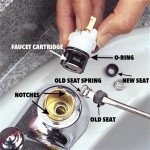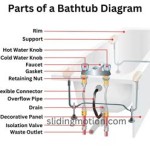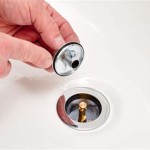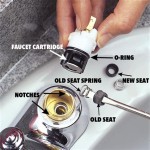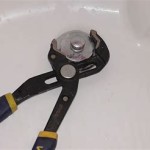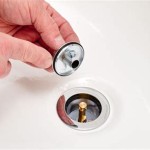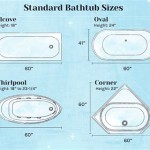Essential Aspects of Bathtub P Trap: A Comprehensive Guide
A bathtub P trap is a crucial component in the drainage system of your bathroom. It serves as a barrier against sewer gases and prevents them from escaping into your living space. Understanding its purpose, types, materials, and installation is essential for maintaining a healthy and functional bathroom.
Purpose of a Bathtub P Trap
The primary purpose of a bathtub P trap is to prevent sewer gases from entering your bathroom. The trap's shape creates a water seal that blocks these noxious gases from escaping through the drain. It also allows water to flow freely while effectively trapping any solids or debris, preventing clogs.
Types of Bathtub P Traps
There are several types of bathtub P traps available, including:
- S Trap: An outdated design that is no longer commonly used, as it can easily siphon the water seal, allowing sewer gases to escape.
- P Trap: The most common type, which forms the letter "P" and provides a reliable water seal.
- U Trap: Similar to the P trap but has a wider diameter, making it less likely to clog.
- Bottle Trap: Has a bottle-shaped body that allows for easier cleaning and access to the trap arm.
Materials for Bathtub P Traps
Bathtub P traps are typically made from the following materials:
- PVC (Polyvinyl Chloride): A lightweight and economical choice that is resistant to corrosion and chemicals.
- ABS (Acrylonitrile Butadiene Styrene): Similar to PVC but more flexible, making it easier to install in tight spaces.
- Brass: A durable and corrosion-resistant material that adds a touch of elegance to your bathroom.
- Chrome: A shiny and scratch-resistant metal that provides a modern and aesthetically pleasing finish.
Installing a Bathtub P Trap
Installing a bathtub P trap requires the following steps:
- Place the trap assembly on the drainpipe and tighten the nuts using a wrench.
- Attach the trap arm to the trap body and tighten the nut.
- Connect the overflow tube to the overflow hole on the trap arm.
- Run water through the bathtub to check for leaks. If necessary, adjust the fittings until there are no leaks.
Maintenance and Cleaning of Bathtub P Traps
Regular maintenance is crucial to prevent clogs and ensure the proper functioning of your bathtub drain. Here are some tips:
- Pour a mixture of baking soda and vinegar down the drain once a month to dissolve any buildup.
- Use a drain snake to clear minor clogs.
- Disassemble the trap occasionally to remove any debris or hair that may have accumulated.
- If you experience persistent clogs or leaks, it's best to call a qualified plumber.
Conclusion
Bathtub P traps play a vital role in maintaining a healthy and comfortable bathroom environment. Understanding their function, types, materials, and installation will enable you to make informed decisions and keep your drains flowing freely. Regular maintenance and cleaning are essential to prevent clogs and ensure the longevity of your bathtub P trap.

Bathtub Plumbing Installation Drain Diagrams Diagram

Understanding Bath Traps

Does A Bathtub Need P Trap Home Efficiency Guide

Bathtub Drain And Trap Shower Plumbing Installation

Older Bathroom With A Drum Trap Here S How To Clear It

Danco 1 2 In X Plastic Tub Trap 88188x The Home Depot

057 Flex P Trap Plastic For Freestanding Bathtub

Drum Traps Structure Tech Home Inspections

Drum Traps Old School Plumbing Fine Homebuilding

Bathtub Drain Trap Too Deep For New Ceiling Doityourself Com Community Forums

